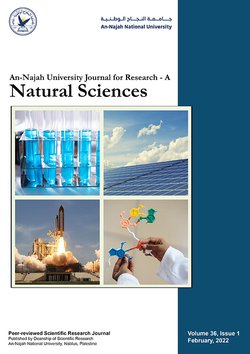Storm Water Drainage in Arid and Semiarid Regions: West Bank as a Case Study
Authors:
Article info
2000-06-13
2002-05-07
2002-05-07
125 - 139
Keywords
Abstract
Storm water drainage is as important in arid and semiarid regions as in humid regions because it is not only a drainage problem but also water resources management and planning problem. In the West Bank, storm water drainage has not been given enough care and no intensive studies have been done. This paper studies the rainfall runoff process in the West Bank as a case study towards understanding storm water drainage in arid and semiarid regions, where the process has different characteristics as being rarely heavy but significant in terms of pollution, annual runoff and/or in improving the sustainability of the water resources. The runoff to rainfall ratio in the West Bank proved to be considerably variable with no clear relation controlling the process. The arid and semiarid watersheds seem mostly to behave as variable sources and as partial contributing areas. In the Soreq and Rujeeb watersheds, studied as example watersheds, no runoff was recorded for daily rainfalls of less than 30mm. Rainfalls of more than 50mm having intensities of 10mm/hr or more proved to produce considerable runoff events. These are still characterized as partial contributing. Subsurface flow in the Soreq watershed is dominated, which indicates that the traditional unit hydrograph approach might not be applicable. Keywords: Storm Water Drainage; Arid and Semiarid Regions; Rainfall Runoff Process; Unit Hydrograph; Partial Contributing Areas.
Shaheen, H. Q. (2002). Storm Water Drainage in Arid and Semiarid Regions: West Bank as a Case Study. An-Najah University Journal for Research - A (Natural Sciences), 16(2), 125–139. https://doi.org/10.35552/anujr.a.16.2.654
[1]H. Q. Shaheen, “Storm Water Drainage in Arid and Semiarid Regions: West Bank as a Case Study,” An-Najah University Journal for Research - A (Natural Sciences), vol. 16, no. 2, pp. 125–139, May 2002, doi: 10.35552/anujr.a.16.2.654.
Shaheen, Hafez Q. “Storm Water Drainage in Arid and Semiarid Regions: West Bank as a Case Study.” An-Najah University Journal for Research - A (Natural Sciences), vol. 16, no. 2, May 2002, pp. 125–39. Crossref, https://doi.org/10.35552/anujr.a.16.2.654.
1.Shaheen HQ. Storm Water Drainage in Arid and Semiarid Regions: West Bank as a Case Study. An-Najah University Journal for Research - A (Natural Sciences) [Internet]. 2002 May;16(2):125–39. Available from: http://dx.doi.org/10.35552/anujr.a.16.2.654
Shaheen, Hafez Q. “Storm Water Drainage in Arid and Semiarid Regions: West Bank as a Case Study.” An-Najah University Journal for Research - A (Natural Sciences) 16, no. 2 (May 2002): 125–39. https://doi.org/10.35552/anujr.a.16.2.654.
جريان مياة الأمطار في المناطق الجافة وشبه الجافة – الضفة الغربية كحالة دراسية
المؤلفون:
معلومات المقال
2000-06-13
2002-05-07
2002-05-07
125 - 139
الكلمات الإفتتاحية
الملخص
جريان مياة الأمطار في المناطق الجافة وشبه الجافة يتمتع بذات الأهمية كما في المناطق الرطبة، حيث ان ذلك لا يمثل مشكلة تصريف وجريان لمياه الأمطار فحسب، وانما يتعدى ذلك ليشمل ادارة وتخطيط مصادر المياه. إن الجريان لمياه الأمطار في الضفة الغربية لم يعط الاهتمام الكافي وليس هناك دراسات مكثفة في هذا المضمار. هذه الورقة تدرس العلاقة بين الجريان والامطار كحالة دراسية في الضفة الغربية بهدف فهم ذلك في المناطق الجافة وشبه الجافة حيث ان عملية جريان مياه الأمطار فيها تتميز بخصائص مختلفة من حيث كونها نادرة الشدة إلا أنها مهمة باعتبار التلوث والجريان السنوي اضافة الى علاقتها باستدامة المصادر المائية. إن نسبة الجريان الى مياة الأمطار في الضفة الغربية متغيرة بشكل ملحوظ دون ان يكون هناك علاقة واضحة تحكم هذه النسبة، حيث ان المناطق الجافة وشبه الجافة تتصرف غالباً كمناطق جزئية التصريف ومتغيرة المصادر فيما يتعلق بالعلاقة بين الجريان والامطار للحوادث المختلفة. في حوضي سوريك وروجيب، كمثالين تم دراستهما في هذه الورقة، لم يتم تسجيل اي جريان يذكر لامطار يومية تقل عن 30 ملم، أما الأمطار التي تزيد عن 50ملم وبشدة تتعدى 10ملم/الساعة، فقد نتج عنها تدفق وجريان ملحوظ، لكنها بقيت تتمتع بالخصائص الخاصة بالاحواض جزئية التصريف. لقد تبين ان الجريان تحت السطحي والى باطن الأرض له الأولوية مما يشير الى ان الطريقة التقليدية في احتساب منحنى التدفق والجريان السطحي لا تنطبق على حالة حوض سوريك وبالتالي على المناطق الجافة وشبه الجافة.
Shaheen, H. Q. (2002). Storm Water Drainage in Arid and Semiarid Regions: West Bank as a Case Study. An-Najah University Journal for Research - A (Natural Sciences), 16(2), 125–139. https://doi.org/10.35552/anujr.a.16.2.654
[1]H. Q. Shaheen, “Storm Water Drainage in Arid and Semiarid Regions: West Bank as a Case Study,” An-Najah University Journal for Research - A (Natural Sciences), vol. 16, no. 2, pp. 125–139, May 2002, doi: 10.35552/anujr.a.16.2.654.
Shaheen, Hafez Q. “Storm Water Drainage in Arid and Semiarid Regions: West Bank as a Case Study.” An-Najah University Journal for Research - A (Natural Sciences), vol. 16, no. 2, May 2002, pp. 125–39. Crossref, https://doi.org/10.35552/anujr.a.16.2.654.
1.Shaheen HQ. Storm Water Drainage in Arid and Semiarid Regions: West Bank as a Case Study. An-Najah University Journal for Research - A (Natural Sciences) [Internet]. 2002 May;16(2):125–39. Available from: http://dx.doi.org/10.35552/anujr.a.16.2.654
Shaheen, Hafez Q. “Storm Water Drainage in Arid and Semiarid Regions: West Bank as a Case Study.” An-Najah University Journal for Research - A (Natural Sciences) 16, no. 2 (May 2002): 125–39. https://doi.org/10.35552/anujr.a.16.2.654.

Since 2019
Cite Score (Scopus): 0.5
Time to First Decision: 3 Days
Submission to Acceptance: 64 Days
Acceptance to Publication: 10 Days
Acceptance Rate: 28%
Call for Papers:
Sustainable Materials and Chemistry for Energy and Environmental Applications
Why should you
Publish With Us?
An-Najah National University
Nablus, Palestine
Nablus, Palestine
- P.O. Box
- 7, 707
- Fax
- (970)(9)2345982
- Tel.
- (970)(9)2345560
- (970)(9)2345113/5/6/7-Ext. 2628
- [email protected]
- EIC
- Prof. Waleed Sweileh
An-Najah University Journal for Research - A (Natural Sciences) by An-Najah University, Nablus, Palestine is licensed under CC BY-NC 4.0

